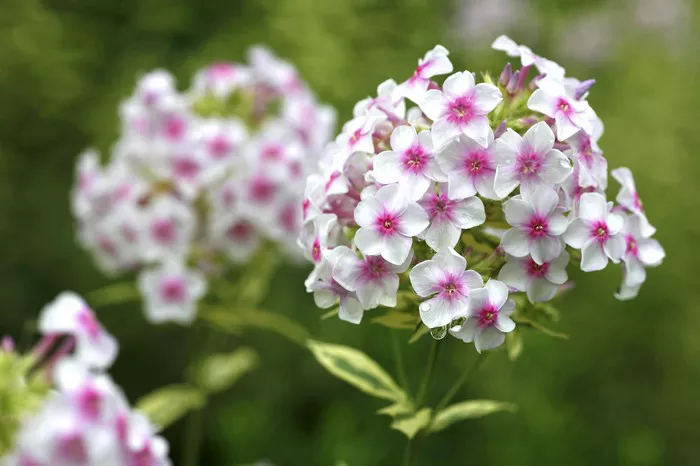In the world of culinary experimentation, the incorporation of flowers into dishes has become increasingly popular. From delicate petals to vibrant blooms, flowers offer not only aesthetic appeal but also unique flavors and nutritional benefits. Among these floral options, phlox flowers stand out for their beauty and potential culinary uses. But the question arises: Can you eat phlox flowers? In this article, we delve into the world of phlox flowers, exploring their edibility, nutritional value, and providing a delightful recipe to tantalize your taste buds.
Understanding Phlox Flowers: A Botanical Marvel
Phlox, belonging to the Polemoniaceae family, comprises a diverse genus of flowering plants native to North America. These stunning blooms come in various colors, including shades of pink, purple, blue, and white, adding a splash of vibrancy to gardens and landscapes. Phlox flowers are characterized by their five-petaled blooms, arranged in dense clusters atop sturdy stems, making them a favorite among gardeners and florists alike.
Edibility of Phlox Flowers: Are They Safe to Eat?
While many flowers are cultivated solely for ornamental purposes, some varieties, including phlox, offer culinary potential. The edibility of phlox flowers largely depends on the species and variety. While some sources suggest that certain phlox species are edible, it is essential to exercise caution and verify the specific type before consumption.
Before adding phlox flowers to your culinary repertoire, consider the following factors:
Species Identification: Proper identification of phlox species is crucial before consumption. While some varieties are deemed safe for culinary use, others may contain compounds that could be harmful if ingested.
Growing Conditions: Ensure that the phlox flowers intended for consumption are free from pesticides, herbicides, and other harmful chemicals. Organic cultivation practices are preferable to minimize the risk of contamination.
Allergies and Sensitivities: Individuals with allergies to plants in the Polemoniaceae family or those prone to plant-related allergies should exercise caution when consuming phlox flowers.
Preparation Methods: Proper preparation is essential to minimize any potential risks associated with consuming phlox flowers. Thoroughly wash the flowers to remove dirt, insects, and any residual chemicals. Trim away the stem and bitter parts of the flower before use.
Nutritional Value of Phlox Flowers
Beyond their aesthetic appeal, phlox flowers offer a surprising array of nutrients, adding both flavor and nutritional benefits to culinary creations. While specific nutritional data for phlox flowers may be limited, edible flowers, in general, are known to contain various vitamins, minerals, and phytonutrients.
Some potential nutritional benefits of phlox flowers include:
Vitamins and Minerals: Edible flowers often contain vitamins A, C, and E, as well as minerals like calcium, potassium, and magnesium, contributing to overall health and well-being.
Antioxidants: Many flowers, including phlox, contain antioxidants that help combat oxidative stress and inflammation, potentially reducing the risk of chronic diseases.
Flavonoids: These plant compounds are known for their anti-inflammatory and immune-boosting properties, promoting health and vitality.
Incorporating phlox flowers into your diet can not only enhance the visual appeal of your dishes but also provide a nutritional boost.
Recipe: Phlox Petal Salad with Citrus Vinaigrette
Now that we’ve explored the edibility and nutritional value of phlox flowers, let’s dive into a delightful recipe that showcases their delicate flavor and vibrant colors. This Phlox Petal Salad with Citrus Vinaigrette is a refreshing and nutritious dish perfect for spring and summer gatherings.
Ingredients:
1. Fresh mixed greens (such as spinach, arugula, and butter lettuce)
2. Edible phlox flowers (ensure they are safe for consumption)
3. Cherry tomatoes, halved
4. Cucumber, thinly sliced
5. Red onion, thinly sliced
6. Avocado, diced
7. Feta cheese, crumbled
8. Fresh herbs (such as basil and mint), chopped
9. For the Citrus Vinaigrette:
- ¼ cup extra virgin olive oil
- 2 tablespoons fresh lemon juice
- 1 tablespoon fresh orange juice
- 1 teaspoon honey or maple syrup
- 1 teaspoon Dijon mustard
- Salt and pepper to taste
Instructions:
1. Begin by preparing the Citrus Vinaigrette. In a small bowl, whisk together the olive oil, lemon juice, orange juice, honey or maple syrup, Dijon mustard, salt, and pepper until well combined. Set aside.
2. In a large salad bowl, combine the mixed greens, cherry tomatoes, cucumber, red onion, avocado, crumbled feta cheese, and chopped fresh herbs.
3. Gently wash the phlox flowers and remove the petals from the stem. Add the phlox petals to the salad bowl, tossing gently to distribute evenly.
4. Drizzle the Citrus Vinaigrette over the salad, tossing to coat the ingredients thoroughly.
5. Serve the Phlox Petal Salad immediately as a refreshing appetizer or side dish.
Conclusion
Phlox flowers offer not only visual beauty but also culinary potential, adding a burst of color and flavor to a variety of dishes. While caution should be exercised regarding their edibility and proper identification, incorporating phlox flowers into your culinary creations can elevate your dining experience and provide a nutritional boost. Whether enjoyed in salads, desserts, or as a garnish, phlox flowers invite exploration and creativity in the kitchen. So go ahead, embrace the botanical marvel of phlox flowers, and let your culinary imagination blossom.


